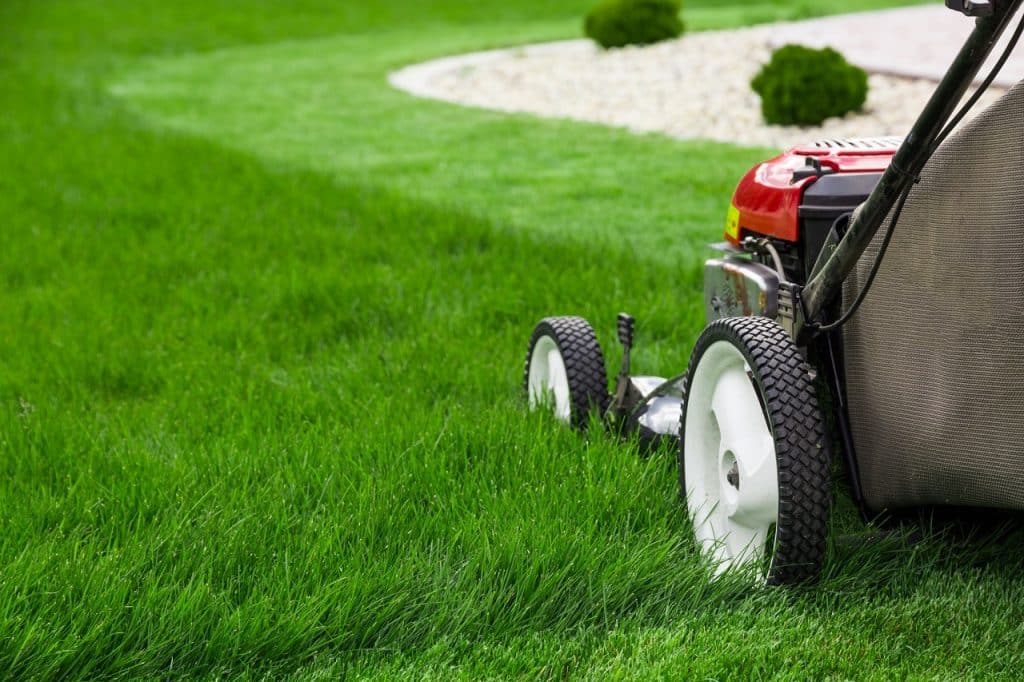Why Consistent Mowing Schedules Matter More Than Fertilizer in Certain Seasons
When spring and summer heat arrive in Fort Worth, it’s tempting to believe that fertilizer is the magic fix for a greener lawn. But timing and consistency often matter more than nutrients during specific times of the year. Let’s take a closer look at why sticking to a consistent mowing schedule can outperform fertilizer in keeping your grass strong, healthy, and weed-resistant, especially under North Texas conditions.

Mowing Keeps Grass Growing Uniformly
A regular mowing rhythm, ideally once a week during the active growing season, encourages grass to produce lateral shoots, which results in thicker turf. When grass is allowed to grow too tall, it turns weak and spindly, making it more prone to diseases and weed invasion. Places like Fort Worth see faster grass growth in spring and early summer. Missing a week or mowing too short can stunt growth, even if the lawn has recently been fertilized. Consistent mowing ensures your grass stays within the optimal height range and builds resilience over time.
Mowing Enhances Fertilizer Effectiveness
Fertilizer works best when grass is growing evenly. If your lawn is overgrown, fertilizer may overload the grass and burn it. When grass is too short, strong fertilizer can stress it. Maintaining the correct mowing height, about 2.5 to 3 inches for Bermuda, Zoysia, or St. Augustine, means that fertilizer nutrients get absorbed evenly, fueling strong root and shoot growth. Inconsistent mowing makes it harder to gauge how much fertilizer is actually needed.
Seasonal Basics: Why Mowing Beats Fertilizer in Summer
Fort Worth summers test the limits of fertilized lawns. High temperatures and drought stress mean grass can’t take up nitrogen efficiently, so fertilizer applied during peak summer often just sits unused or burns roots. On the other hand, mowing high during dry periods helps the grass shade itself and retain moisture. A consistent mowing schedule in summer keeps the lawn at a healthy height, preserves soil moisture, and reduces heat stress, without fertilizer that may do more harm than good in those conditions.
Weed Prevention Starts with Mowing
Weeds thrive in tall, uneven lawns. Regular mowing keeps weeds small before they seed and block out sunlight. Thick, well-cut grass forms a natural barrier, making it harder for dandelions, clover, and crabgrass to take hold. Weed control alone can’t compensate for patchy, unkempt lawns. Mowing consistently is your first defense strategy, and when it’s done well, fertilizer becomes an enhancer, not a crutch.
How Soil Aeration, Mowing, and Roots Work Together
A consistent mowing routine reduces soil compaction caused by heavy ruts or foot traffic. Compaction limits root growth, making it harder for fertilizer nutrients to reach deep into the soil. Seasonal aeration helps, but the real fix is even mowing patterns. Rotating the mowing direction slightly each week prevents one path from becoming compacted. When grass roots grow freely, they can absorb nutrients more effectively, making fertilizer more beneficial. A poor mowing strategy undercuts all this by leaving compacted areas where nutrients simply can’t reach.
Measuring Grass Health: Why Height Matters More Than Color in Some Months
After fertilization, it’s natural to expect immediate greening. But in spring, when grass is rapidly growing, the real measure of health is slow, steady growth, not color alone. Fertilizer can temporarily intensify green but won’t fix issues like mowing stress, insect damage, or thatch buildup. Instead of focusing on color, look at turf thickness, uniform height, and lack of thinning spots. Grass that’s consistently cut to the proper height will fill in and resist pests far better than grass that receives fertilizer but grows unevenly.
Real-World Impact: Homeowner Scenarios in Fort Worth
Consider two homeowners: one fertilizes heavily but mows irregularly; the other mows routinely but fertilizes only seasonally. Over time, the second yard looks more even, feels thicker, and weathers heat better, even on days after rainfall. Regular mowing builds structure. In a survey by the Turfgrass Producers of Texas, lawns that followed weekly mowing schedules had nearly 30% fewer weed complaints than those relying on fertilizing as a patch fix, proving consistency pays off.
Practical Tips for Fort Worth Lawns
- Stick to a once-a-week mowing schedule during active growth (March through June).
- Adjust mowing height seasonally: higher in summer, slightly lower in spring flush.
- Rotate the mowing pattern each week to prevent compaction.
- Skip fertilizing during heat waves or dry spells. Delay until early morning and avoid midday sun.
- Use sharp mower blades to promote clean cuts and faster recovery.
- Combine mowing with periodic aeration to improve soil oxygen and water flow.
In Fort Worth, mowing right and mowing consistently builds the foundation your grass needs. Fertilizer can help, but only if your lawn is already well-maintained. In most seasons, consistent mowing beats extra nutrients when it comes to building strong, verdant turf.
Ready to get your lawn looking its best? Call Mow & Grow at (817) 717-2686 for expert mowing and maintenance in Fort Worth, TX.
